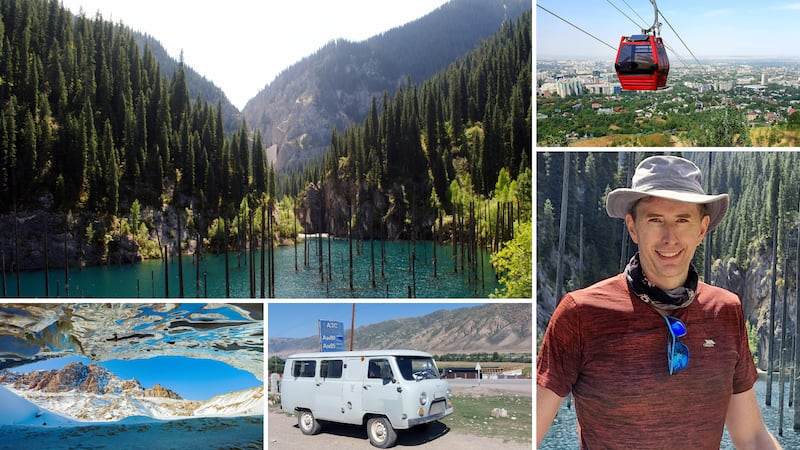The morning I left Jasper in Alberta, the day didn’t seem to know what to do with itself. One minute the sun was beating down on the mountains, picking out all the interesting visual details; the next minute, gloomy clouds would creep in and with them, the rain.
By the time I got to Mount Robson, heading pretty much northwest, about 80km down Highway 16, the day had settled on being fine but the tops of the mountains still had clouds sitting on them. And that included Mount Robson, at 3,954 meters it is the highest mountain in the Canadian Rockies.
At Mount Robson, there’s a pit stop information shop for tourists and all the coaches pull in and if you want to go trekking, there are several ways to get around the back of the mountain where its glacier sweeps down into a lake. Behind the shop, there’s a large grassy area in front of a forest of aspens and pines that blanket the flat earth running for a couple of kilometers to the foot of the great mountain. And it really is magnificent – even if its peak is shrouded in low cloud, much to the dismay of the serious minded photographer with his camera mounted on a tripod, waiting for a charitable gush of wind to clear the peak for him.
The mountain looks like a series of triangular peaks, each one stacked against another and each rising a little higher until the summit itself emerges. And the horizontal stratification of the limestone rock is picked out in near perfect detail by a dusting of snow that remains, even though we are now half way through June. To the native people who knew the mountain long before anyone else, those horizontal lines were like a spiral, so they called it the mountain of the spiral road.
RM Block
Having spent several days in Vancouver and most of a week in Nelson researching the decriminalisation of hard drugs and legalisation of cannabis, then to the far east of British Columbia, way off my notional route north to Alaska, I really wanted to get back on track. So after paying due respect to Mount Robson, I hit the road northwest for Prince George and stopped again really only twice.
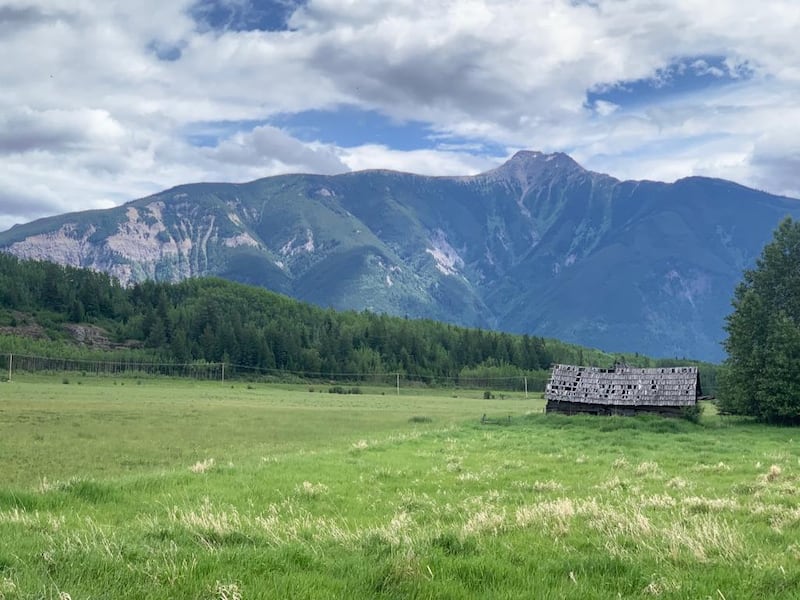
The first was to say hello to a moose grazing in a field. It seemed a bit put out at my attention but wasn’t sure whether to run away. Instead, it did a sort of little circular trot of anxiety before deciding, sensibly, that “he’s just another biker” and carried on grazing. The other stop was to examine an abandoned sort of “Little House on the Prairie” dwelling near the settlement of McBride that would make a great retirement restoration project...
Prince George, when I did get there, didn’t present its best face. The highway skirts around the edge of the town, by the railway tracks and associated post-industrial gunge, and so I just carried on hoping to stumble across a campsite. After about 20kms, a sign said Northland RV Park and so I pulled in. Noreen, the lady who ran it, said they really don’t do camping, just trailer homes on one side of the site and RVs on the other. It was getting late and I must have looked disappointed because, after asking me where I had come from and me telling her the Tip2Top story, she said: “See that green patch over there,” pointing to a lawn on the RV side, “you can camp anywhere over there and I won’t charge you.” And then she asked me how old I was!
Noreen and her husband Ernie bought the place a few years back “and then some Chinese [people] with a lot of money offered us a lot of money for it and so now I just manage the place for them and live here”.
“Here” was a very nice and cosy trailer home that had all Noreen and Ernie’s bits and pieces, a small office for the RV business and a nice patio and awning for when the weather was good.
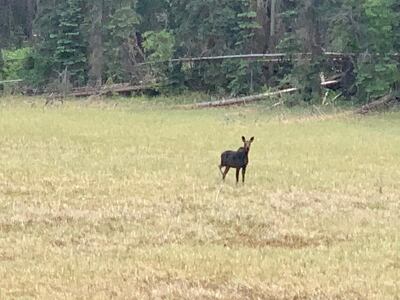
Further up the RV site lived her friends Mike and Wendy in their RV, which had a little fenced-in garden for their two small dogs, and a man-shed where Mike, a trucker, had a sofa that he sometimes fell asleep on. There was a TV in the shed too with a pull down white sheet on which he could project films. Mike and Wendy used to live in a house nearby but sold it recently and were planning on going south in the RV. Then they decided, heck, we just like it here, and so they moved the RV into Noreen’s place and that’s now home. Mike made me coffee to welcome me as I pitched my tent for the night.
The next day I awoke to hear the intermittent patter of rain drops on the tent and so I got up fast to dismantle everything and pack it all away before it got soaked. I set off for my target destination for the day, a place named Smithers – about 400km altogether. A lot of biking but I really needed to crack on and break the back of the 1,200km between me and the Yukon.
The only stop I made was in a place named Vanderhoof where, in an outdoor store for game hunters and fishing, I bought some bear spray.
“You going all the way up 37?” Mike had asked me about the road that branches north off Highway 16. I said I was. “Used to truck up there regular. You’ll see lots and lots of bears. Be careful.”
The spray is a sort of pepper spray cannister gun and so I got a holster too!
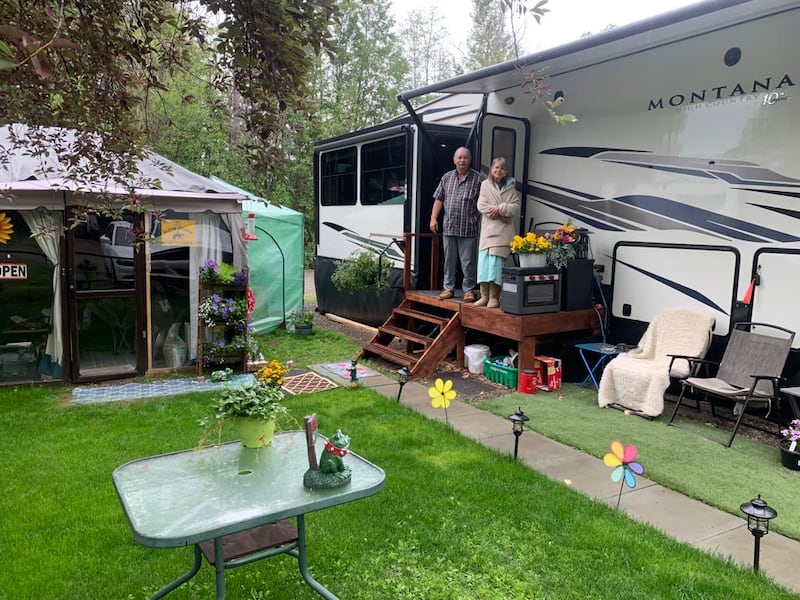
I got to Smithers at about 6pm, exhausted but okay. The municipal campsite was very nicely laid out and well kept, situated by the river. That evening, I saw my first bear – way off upstream on the bank of the river, a medium-sized fellow, as far as I could make out, minding his own business and well out of bear spray range, even if I wanted to zap him.
The following day, I had a memorable encounter just north of Smithers, at a place named Moricetown. Highway 16 goes through the Bulkley River Valley and its apparent at one point on the road that the river below goes into some falls. A few people stopped to look at what I assumed was a pretty sight, so I pulled over.
Down below, at the Moricetown Falls there were two men, one with a very long pole that had a net on the end – apparently he was fishing. I went down to get a closer look. The river there is really wide and bends into a graceful curve as it approaches a gorge, heralded by big rocks opposite each other, forcing the water into a narrow through which it passes with great force and speed, frothing and roaring all at once. I joined the men down at the rocks
One of the men, Myron, had the pole and net, and Warner, the other man, was watching. Both are members of the Wet’suwet’en tribe whose members, maybe 2,000 said Myron, live in the Witset Canyon. There’s a channel beside the main fall into the canyon and the water there slips into a large pool and moves on through it much slower than the main body of water. In that channel too, there is a man-made ladder through which fish can swim upstream with greater ease than trying to battle through the main river as it tumbles down the canyon.
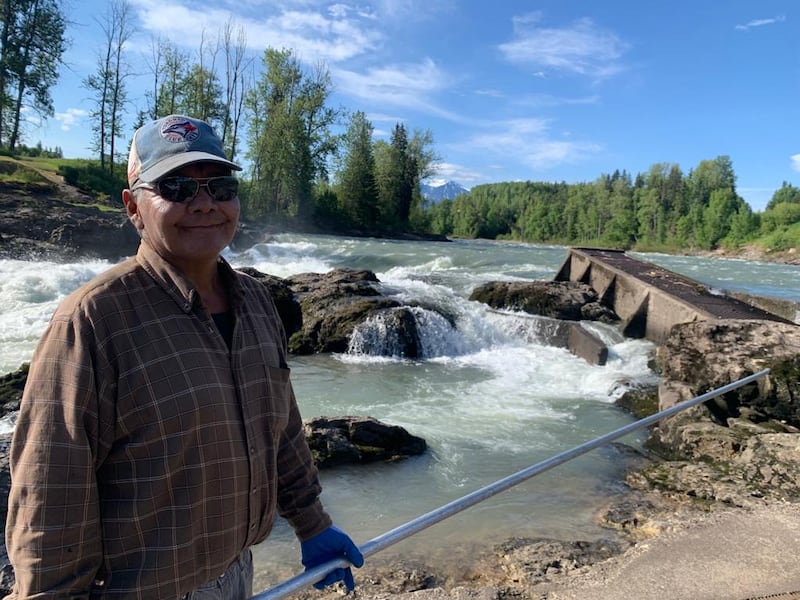
Myron was dipping his pole and net deep into the pool, stirring it around and then pulling it out. Nothing.
“No salmon yet,” he said to me. “Next month. Then, they’ll come. First week of July.”
“Will there be many?” I asked.
“Lots,” he said but not as many as years ago, apparently.
The annual salmon run is a great occasion for the whole community, it would seem. When the salmon arrive, people come to the gorge, to the rocks on either side, and use nets on long poles to catch the fish.
“Do the bears come too?” I asked.
“Sure, they come! You can see ‘em on both banks up there,” he said pointing a little upstream where the river is wide and the water a bit shallower. “We got bear bangers, and they run back up the banks when they go off, but then they get used to them and pay no notice when they go off. It’s the way.”
He said I should come back and see it all, maybe on my way back down from Alaska. I told him I’d like to, and I really would! I thanked him for chatting, took a couple of photos and we parted ways. “You betcha,” said Myron by way of goodbye, “see ya soon.”
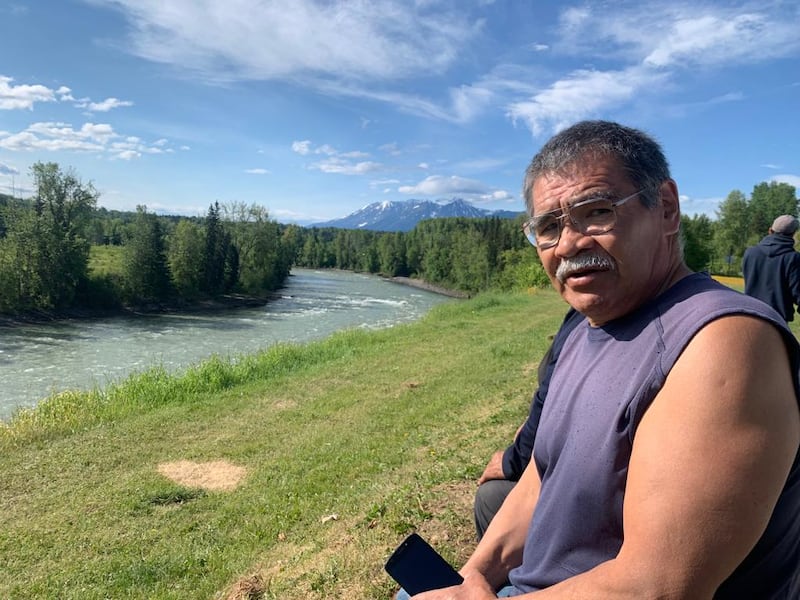
Back up on the highway there was another man, Willie, sitting watching the river.
“Been fishing there 45 years,” Willie said, “we’re part of a dying breed down here. Each year we have maybe 10 poles on either side [of the gorge] and there’s just less salmon.”
“This used to be all village houses along here,” he said. “But they modernised it. Built new houses up there (he indicated behind, on the far side of the highway) and this is a historical site now.”
I was unsure if he was pleased about that or laments something lost. He said that Myron got a sockeye salmon recently.
As far as I could see, there was no real centre to the village, but there was a gas station about 200 meters, overlooking the village and the gorge. Arnold, an indigenous person, and Scotty, who is European-Canadian (lots of Irish and Scots in his background too), joined me on a bench by the road.
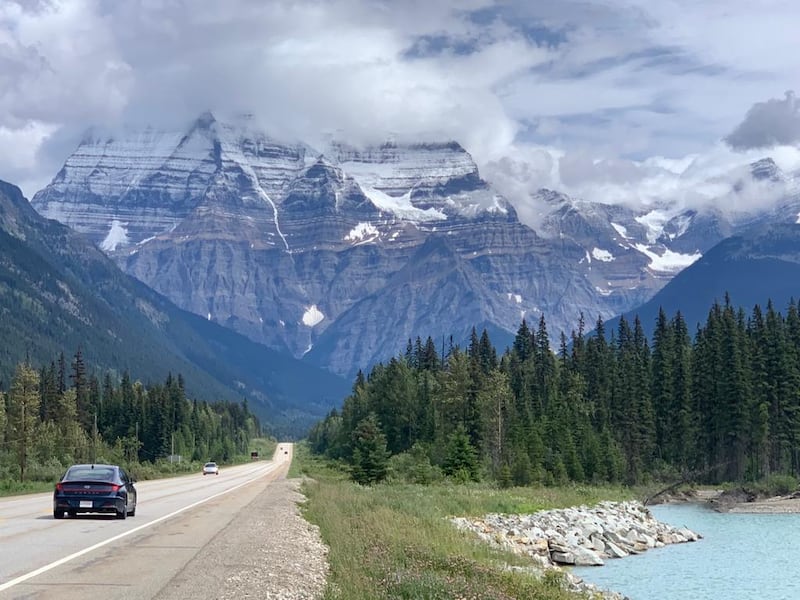
Arnold looked over at a patch of ground where a digger had removed the shrubs and grass and scoured up the soil before ceasing work.
“See they stopped,” Arnold said.
“I told ‘em,” said Scotty, “told ‘em there was people buried there. But they didn’t listen just went right on ahead and did it. And dug up bones. Just like I said they would. And now they’ve stopped. People buried all over here,” he said gesturing with a sweep of his arm, making an arc across the whole area. The plan was, apparently, to create a trek walkway around the village.
We talked about the salmon. “They’re in,” Scotty said with great certainty. “Can smell ‘em now. You smell ‘em?” he asked me as if seeking confirmation.
“They’re there, that’s for sure.” I couldn’t smell anything except my coffee, but I told him Myron got nothing that morning when he went looking. “Well, they’re there,” said Scotty, “maybe resting in the pool down there (he pointed to a part of the river below the gorge.) They’re here. I can smell ‘em.”
He said there’s fewer salmon because of bad fish husbandry.
“One of the elders said to me years ago,” Scotty explained, “if you take from the river, you have to put back in the river. They ain’t putting nothing back. Nothing about over fishing.
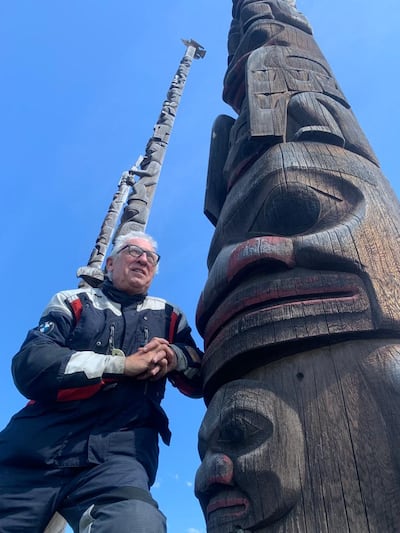
“It’s all about the spawning beds... used to be colder here too in winter. Minus 50 maybe. Now it’s only ever minus 30. Snow only up to here,” he indicated with an open palm waist, as if to suggest it used to be much higher.
I travelled up Highway 37, on through Hazelton and into Gitanyow, a tiny village off the highway famous for its totem poles. There were maybe 20 of the giants on a sort of green in the centre, all carved with strange squat figures, little fat men, or that’s how they look, and animals – birds, birdmen and dogs – on ageing and weathered poles about 60ft tall.
Highway 37 carried on northwards, and me with it. Through valleys and forests, past rivers and lakes of great beauty... and evidence of fewer and fewer people. I admit to myself that I’m a little nervous. Next stop: The Yukon.
Peter Murtagh is travelling by motorbike from Tierra del Fuego, at the tip of South America, to Alaska, at the top of North America, and writing here regularly. You can also read his blog and follow him on Twitter, Facebook and Instagram













